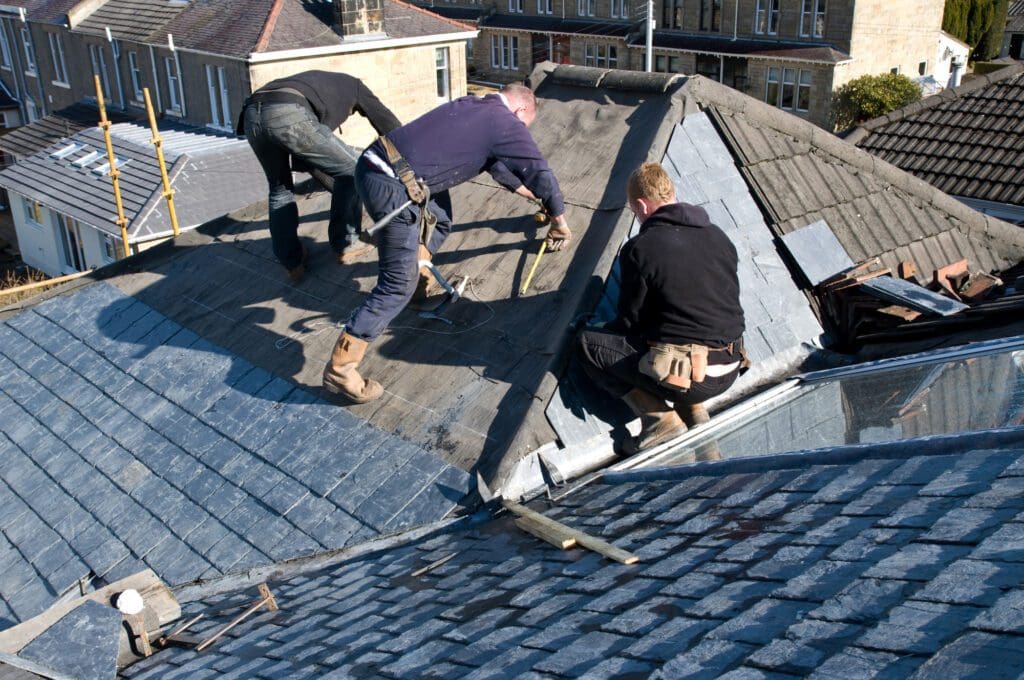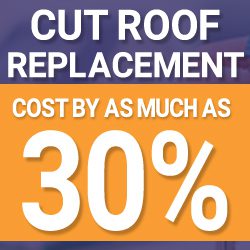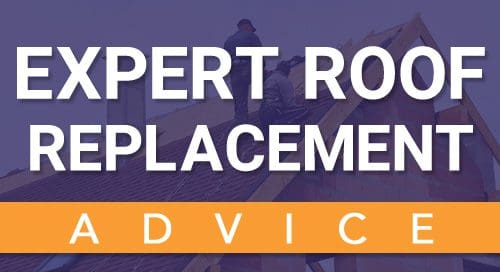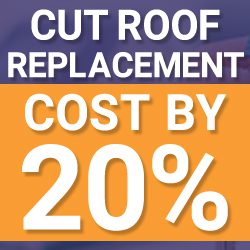
The Best Roofing Material Trends to Consider in 2023
In the vast expanse of home improvement and architectural design, roofing materials have undergone remarkable advancements, especially in recent years. As we navigate through 2023, several trends are taking the roofing industry by storm, encapsulating both aesthetic appeal and sustainability. Let’s embark on a journey through the latest roofing material trends, providing insights that may assist homeowners, builders, and architects in making well-informed decisions.
COMPARE QUOTESEmbracing Sustainable Roofing Solutions
As global emphasis on environmental conservation intensifies, the roofing industry has pivoted towards materials that are eco-friendly without compromising on durability and style. Sustainable roofing solutions now extend beyond mere material choices, focusing also on energy efficiency and the overall environmental impact throughout the product lifecycle.
- Solar Roof Tiles: With homeowners and businesses alike turning towards renewable energy sources, solar roof tiles have emerged as a popular choice. These tiles not only provide a sleek appearance but also generate electricity, potentially reducing energy bills and minimizing the environmental footprint.
- Green Roofs: Literally green, these roofs are adorned with vegetation and plants, promoting biodiversity and providing natural insulation. A green roof can reduce the heat island effect in urban areas and manage stormwater runoff, all while providing a refreshing aesthetic appeal.
Reflective and Cool Roofing: Mitigating the Urban Heat Island Effect
Reflective or “cool” roofs are designed to reflect more sunlight and absorb less heat than a standard roof, using reflective paint, a sheet covering, or highly reflective tiles. Particularly in urban areas, where the Urban Heat Island (UHI) effect is prevalent, cool roofing can help in mitigating this phenomenon, thereby reducing the energy demands for cooling buildings. A study from the Lawrence Berkeley National Laboratory confirms that cool roofs can help lower outside air temperatures, particularly during peak summer.

The Essence of Sustainable Roofing Choices
Selecting sustainable roofing solutions involves a nuanced understanding of various factors, including local climate, building design, and budget. The aim is to integrate a solution that not only aligns with environmental preservation but also provides effective performance, durability, and cost-effectiveness over the long term.
As the discourse on global environmental change continues to shape industry practices, adopting sustainable roofing solutions not only resonates with the global shift towards sustainability but also substantiates a commitment towards a greener, cleaner, and sustainable future in building practices. Exploring and integrating these innovative roofing solutions will pave the way towards more sustainable development, ensuring that the buildings of today are equipped for the environmental challenges of tomorrow.
COMPARE QUOTESDurability and Longevity: Ensuring Roofing Stability
When it comes to roofing, the longevity and durability of materials are paramount. Given that the roof must withstand various weather conditions, from scorching heat to freezing winters, materials that promise long-term performance are gaining traction.
- Metal Roofing: Recognized for its durability and resistance to extreme weather conditions, metal roofing is witnessing a revival, with an emphasis on modern design and improved energy efficiency. Innovations in metal roofing, such as stone-coated steel, offer a combination of strength and a versatile aesthetic.
- Synthetic Roofing: Materials like polymer composites are making headway due to their durability and flexibility in design. Synthetic roofing can mimic various materials, such as slate or wood, providing an attractive appearance without compromising on strength or longevity.
The Robustness of Metal Roofing
One of the trailblazers in terms of stability and durability in roofing materials is metal. Metal roofing, often made from steel, aluminum, or even copper, is lauded for its formidable resistance against extreme weather conditions, including heavy rain, hail, snow, and wind. Steel roofing, for instance, can sustain wind speeds of up to 140 miles per hour. Not only does it stand stalwart against the weather, but metal roofing also possesses a life expectancy of 50 years or more when maintained appropriately, making it a time-tested material that promises stability and longevity.



Slate Roofing: A Blend of Luxury and Endurance
For those seeking a blend of aesthetic luxury and robustness, slate roofing tends to stand out. Notoriously durable, slate roofs boast a lifespan that can exceed 100 years when well-maintained. This natural stone material is resistant to moisture, inhibiting the growth of mold and fungus, and demonstrates a remarkable immunity to temperature fluctuations, maintaining stability amid heatwaves and frigid temperatures alike. Furthermore, its hefty weight and solid structure provide a formidable shield against harsh winds and heavy snow.
COMPARE QUOTESConcrete and Clay Tiles: Melding Tradition with Durability
Concrete and clay tiles have long been utilized across various geographical locales, marrying traditional architectural styles with noteworthy durability. Concrete tiles are celebrated for their ability to withstand extreme weather events, providing a robust defense against hail and high winds. Similarly, clay tiles, widely utilized in Mediterranean and Spanish-style architecture, are fire-resistant and can endure harsh weather conditions, providing a resilient and visually appealing roofing solution.
Technology Infusion: Smart and Responsive Roofing
Technological advancements have permeated the roofing industry, leading to the development of smart and responsive roofing solutions. These aim to enhance performance and functionality while often contributing to energy conservation.
- Cool Roofs: Employing materials designed to reflect more sunlight and absorb less heat, cool roofs mitigate heat absorption, ensuring the indoor environment remains cooler, which is particularly advantageous in hot climates.
- Roofing Software: Technological tools facilitate better decision-making in selecting and installing roofing materials. From software that predicts weather durability to those that visualize the final look, technology aids in optimizing material choice and installation processes.
Smart roofing is no longer a futurist’s dream but a tangible reality in the 2023 construction landscape. Innovations have converged materials science and digital technology, resulting in roofing systems that interact and adapt to their environment in novel and beneficial ways.


Adapting to Weather Variations
One of the cornerstone features of smart roofing systems involves their adaptability to varying weather conditions. Responsive roofing materials can alter their properties or actions depending on the current climatic circumstances. For instance, thermochromic materials have been developed to change color based on the ambient temperature, reflecting light and heat when it’s hot to keep interiors cool and absorbing heat during cooler weather to assist in keeping a home warm. Such adaptive capabilities aid in maintaining interior temperature stability and can potentially reduce energy consumption, particularly in terms of heating and cooling expenses.
COMPARE QUOTESIntegrating Solar Technologies
Smart roofing also embraces the integration of solar technologies, enabling homes to generate their own electricity. These are not the bulky solar panels of the past, but modern, sleek options like solar shingles and tiles which blend seamlessly with the existing roof aesthetics while providing renewable energy. Moreover, developments in solar technology now allow for energy storage, ensuring that the power generated during sunlit hours can be utilized during nighttime or cloudy days, enhancing the self-sufficiency of homes.
Employing Sensor Technology
Embedding sensor technology within roofing systems introduces a plethora of advantages, particularly concerning predictive maintenance and effective energy utilization. Sensors can monitor various parameters like temperature, moisture levels, and structural integrity, transmitting this data to homeowners or facility managers. This facilitates timely interventions, preventing minor issues from cascading into substantial, costly damages. Furthermore, such technology can potentially be synced with smart home systems, providing an integrated approach to home management and maintenance.
The Ecological Footprint
Smart roofing solutions also navigate towards reducing the ecological footprint of structures. By optimizing energy usage, incorporating renewable energy generation, and utilizing materials that are sustainable and recyclable, these intelligent systems align with global initiatives toward environmental conservation and sustainability. Roofing systems that self-monitor, self-regulate, and self-report issues are pivotal in reducing wastage of resources and enhancing the lifespan of the materials used, further underpinning their eco-friendly stature.



Aesthetic Appeal: Merging Style with Functionality
Roofing materials, while primarily functional, also significantly impact the aesthetic appeal of a structure. As architectural styles evolve, so does the visual aspect of roofing materials.
- Bold Colors: While traditional roofing materials often sported neutral tones, a trend towards bold and varied colors is becoming apparent. Whether it’s vibrant blues, deep reds, or elegant greens, colorful roofing is becoming a centerpiece in architectural design.
- Varied Textures: Different textures, from smooth metallic finishes to textured shingles, are being explored to enhance visual appeal and integrate seamlessly with varied architectural styles.
Navigating the Future of Roofing
In 2023, the roofing trends are centered around a fusion of sustainability, durability, aesthetic versatility, and technological integration. As homeowners and industry professionals explore roofing materials, the interplay of these elements will be pivotal in making choices that are not only trend-aligned but also prudent for long-term usability and environmental impact.
COMPARE QUOTESRoofing materials are an essential component of architectural design and structural integrity, warranting careful consideration and informed decision-making. In navigating through the trends and options available, always factor in the specific needs, environmental conditions, and architectural style of the project to ensure that the chosen roofing material stands the test of time and elements.


The Price Tag on Popularity: Understanding the Cost of 2023’s Roofing Trends
Navigating through the robust, innovative, and aesthetically pleasing roofing trends of 2023, it becomes imperative to dissect the financial aspects entwined with these advancements. Roofing, though paramount, does entail a substantial investment, and understanding the cost dynamics is crucial for homeowners, developers, and contractors alike.
Sustainable Roofing Solutions
The burgeoning trend towards sustainability has shaped roofing materials and technologies that prioritize ecological conservation without compromising durability and aesthetics. Some of the prominent sustainable roofing options include:
- Green Roofs: The average installation cost of a green or “living” roof ranges from $10 to $30 per square foot, with variations depending on the complexity and specific plantings.
- Solar Tiles: Integrative solar tiles or shingles, which meld with the existing roofing structure, generally run between $21 and $25 per square foot.
Durable and Stable Roofing Materials
Emphasizing longevity and durability, stable roofing materials have etched their importance in the construction sphere. Some noteworthy materials in this segment encompass:
- Metal Roofing: Typically, metal roofing costs between $5 and $14 per square foot, depending upon the specific metal, finish, and installation complexities.
- Slate Roofing: Renowned for its longevity and aesthetic appeal, slate roofing averages between $10 and $75 per square foot, influenced heavily by the quality of the slate and installation intricacies.



Smart and Responsive Roofing
The arena of smart roofing amalgamates technological innovation with practical utility, fostering a milieu where convenience and functionality reign supreme. This segment encapsulates:
- Thermochromic Materials: While thermochromic roofing is still relatively nascent, the estimated roofing material cost for specialized materials fluctuates between $20 and $50 per square foot.
- Sensor-Embedded Roofing: This cost can be variable, dependent on the sensor technology, integration, and roofing material, but expect a ballpark figure of $15 to $30 per square foot in addition to the base roofing costs.
The Aesthetics and Customization
Ensuring that the roofing complements the architectural ethos and personal preferences, aesthetic and customized roofing solutions have found their place in the market.
- Customized Tiles: Depending on the material, design, and manufacturing intricacies, customized roofing tiles can range anywhere from $15 to $100 per square foot.
- Designer Shingles: A broad spectrum exists here, with designer and luxury shingles averaging between $50 and $150 per square foot, often driven by brand, material, and design specificity.
Striking a Balance: Cost and Quality
While these numbers provide a generalized perspective, it’s essential to remember that roofing costs can be influenced by numerous factors, including geographic location, installation complexity, and specific product brands or developers. Always prioritize obtaining several quotes and ensure that your chosen option not only fits your budget but also adheres to the quality, durability, and aesthetic that you desire for your property. Making an informed, well-rounded decision is pivotal to ensuring that your investment into any of these 2023 roofing trends is sound, sustainable, and satiating for the years to come.



Navigating Financial and Environmental Implications: Making a Wise Choice
In the meticulous journey through roofing solutions, it becomes pivotal to navigate both the financial and environmental implications concurrently. How your roofing choice impacts your wallet and the world around you is a two-pronged consideration that requires thoughtful contemplation.
Return on Investment (ROI) and Lifespan
A pivotal consideration in making a selection amongst the illustrious array of roofing options is understanding the return on investment (ROI) and lifespan juxtaposition. Often, the initial investment might seem steep, but when divided over the expected longevity of the material, it becomes a worthy investment. For instance, while slate roofing is at a premium, its longevity, which can span decades, often justifies the initial financial outlay.
Similarly, while green roofs or solar tiles may come with an upfront cost, the long-term savings on energy costs and potential tax credits could offset these initial investments. Furthermore, the added bonus of potentially increasing the property’s value becomes a lucrative cherry atop this sustainable choice.
COMPARE QUOTESEnvironmental Footprint
Weaving through the lens of environmental conservation, your roofing choice symbolizes your commitment to a sustainable future. Green roofs, for instance, not only curtail heating and cooling costs but also foster a micro-habitat, supporting local flora and fauna. Solar tiles are not merely a nod towards sustainability but a tangible step towards reducing dependency on conventional energy sources.
Moreover, utilizing recycled or upcycled materials for roofing not only can be a cost-effective solution but also significantly reduces the environmental impact, steering towards a conscious and responsible building practice.



Adaptation to Climatic Conditions
Factoring in the climatic conditions of your locale is also integral to making a prudent roofing choice. For instance, metal roofing might be immensely beneficial in areas prone to wildfires due to its non-combustible nature. Conversely, in a tropical or coastal environment, corrosion-resistant materials or specific metal alloys would be more apt to prevent rust and degradation.
Assessing Warranty and Maintenance Needs
In the kaleidoscope of costs, also embedded is the often-overlooked aspect of maintenance and warranty. High-durability materials like slate or metal might come with a premium price tag, but their low maintenance needs and longer warranty periods often offset these costs in the long run. Ensure that you delve into the specific warranty details, understanding the parameters and conditions, to safeguard your investment efficiently.
Culmination: Synthesizing Cost, Environment, and Practicality
As you saunter through the labyrinth of roofing materials, technological advancements, and aesthetic preferences, weaving a thread that synchronizes cost-effectiveness, environmental impact, and practical utility becomes crucial. Your choice will lay the foundation, quite literally, for the environmental and financial footprint of your abode or property.
In the architectural symphony, your roofing choice narrates a melody of your priorities, values, and foresight. Let it echo the tunes of sustainability, financial sagacity, and a future-forward mindset. In the rich tapestry of available options, may your choice resonate with wisdom, prudence, and a harmonious blend of aesthetics and ethics. So, while the trends of 2023 offer a palette of options, your unique strokes will paint the canvas of your architectural masterpiece.
COMPARE QUOTES


Leave a Reply